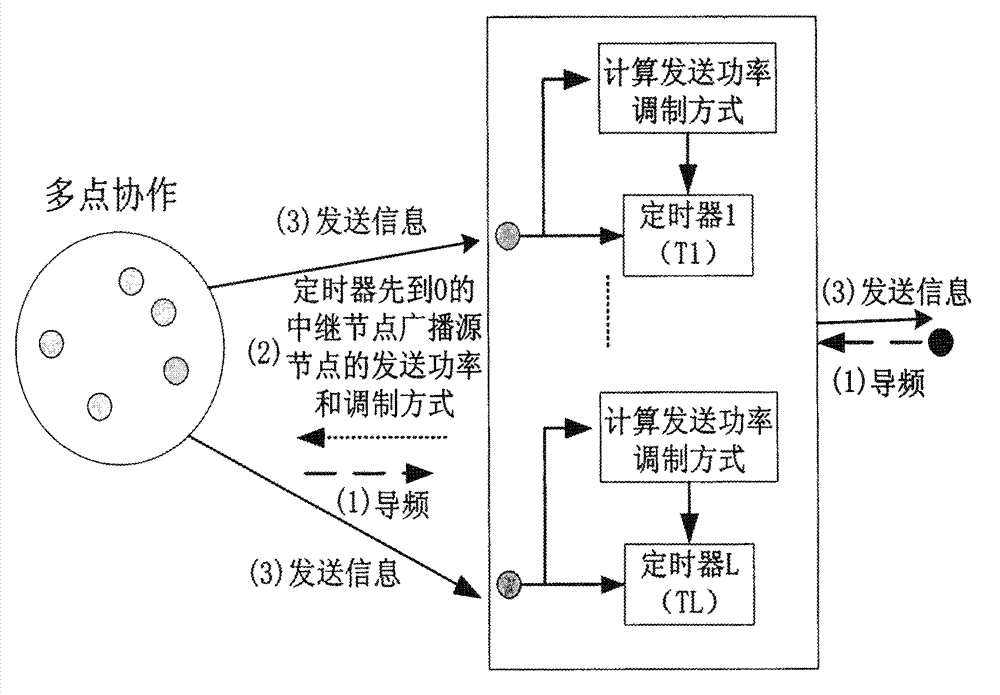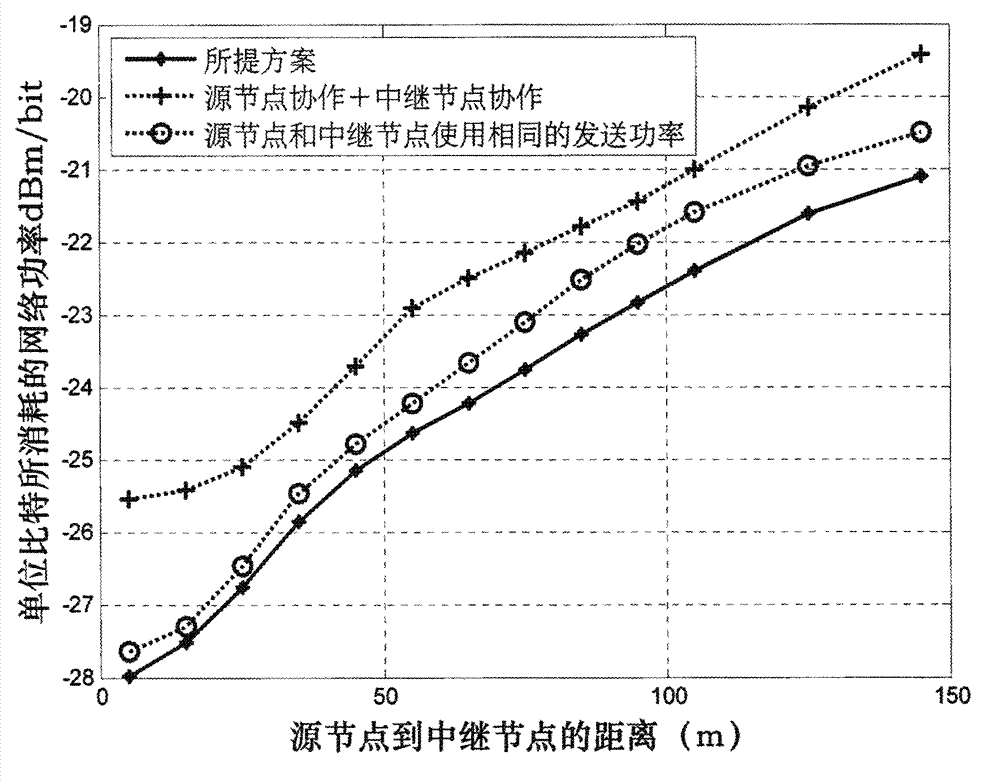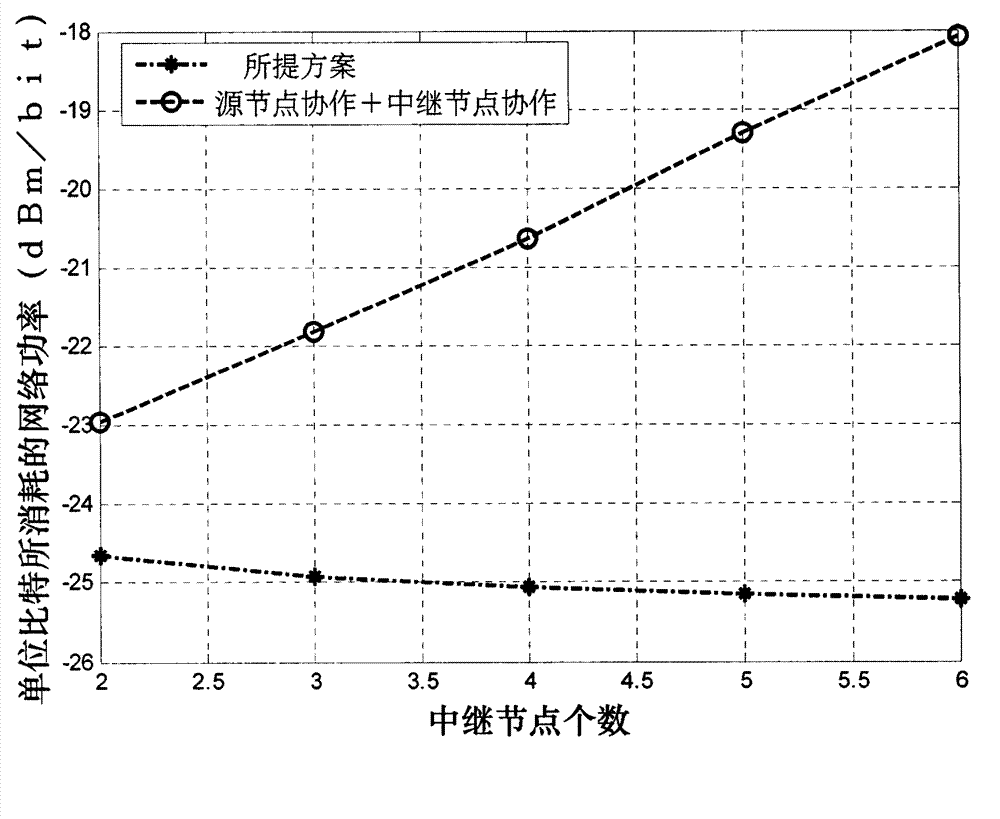Energy-saving transmission scheme of opportunity relay system
An energy-saving transmission and relay node technology, applied in the field of communication, can solve the problems of no power, joint optimization of modulation mode and relay node selection, and no consideration of power control in source nodes and relay nodes, so as to reduce transmission power, The effect of reducing the transmit power and reducing the total power consumption
- Summary
- Abstract
- Description
- Claims
- Application Information
AI Technical Summary
Problems solved by technology
Method used
Image
Examples
Embodiment Construction
[0012] The embodiment of the present invention provides a distributed relay node selection, joint optimization scheme of transmission power and modulation mode, which is used to minimize the total power consumption of the sensor network.
[0013] 1. System model
[0014] refer to figure 1 , the relay network in the embodiment of the present invention consists of M t It consists of source nodes, L relay nodes and a destination node. Assume that there is no direct path between the source node and the destination node. order h sl Indicates the channel vector representing small-scale fading between the source node and the relay node, h ld Indicates the channel coefficient representing small-scale fading between the relay node and the destination node. Wireless channels in the network also experience square rate path loss. The uplink and downlink of wireless channels in the network have reciprocity.
[0015] refer to figure 1 , the working process of the relay network in th...
PUM
 Login to View More
Login to View More Abstract
Description
Claims
Application Information
 Login to View More
Login to View More - R&D
- Intellectual Property
- Life Sciences
- Materials
- Tech Scout
- Unparalleled Data Quality
- Higher Quality Content
- 60% Fewer Hallucinations
Browse by: Latest US Patents, China's latest patents, Technical Efficacy Thesaurus, Application Domain, Technology Topic, Popular Technical Reports.
© 2025 PatSnap. All rights reserved.Legal|Privacy policy|Modern Slavery Act Transparency Statement|Sitemap|About US| Contact US: help@patsnap.com



